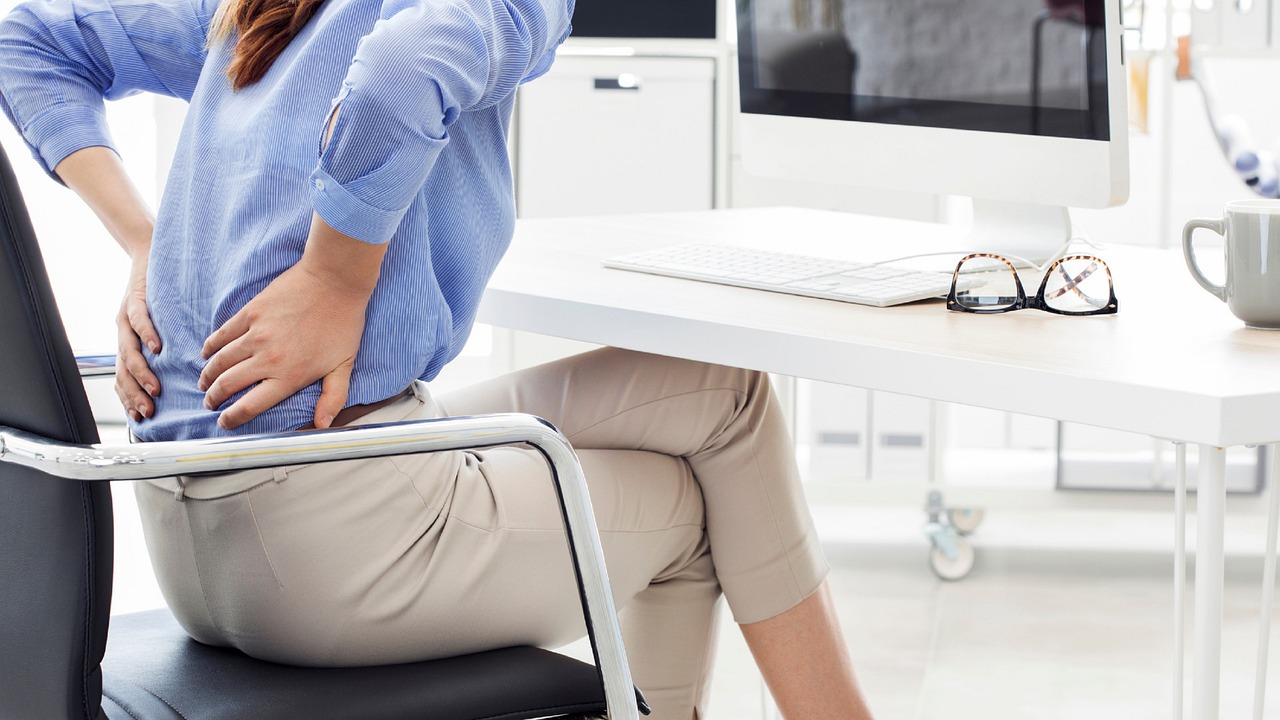Tips To Take Care of Your Back
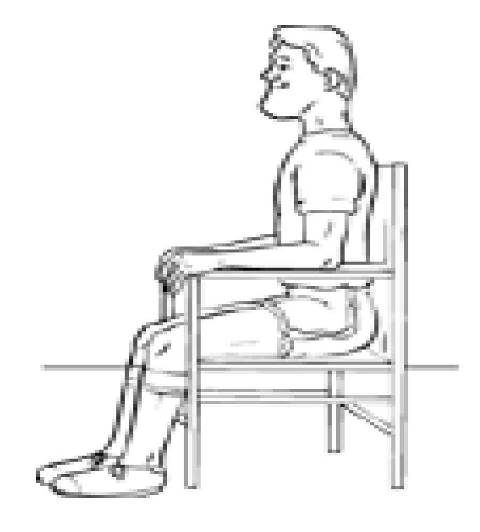
Sitting
- Sit as little as possible, and only for short periods of time (10 to 15 minutes).
- Sit with a back support (such as a rolled-up towel) at the curve of your back.
- Keep your hips and knees at a right angle. (Use a footrest or stool if necessary.) Your legs should not be crossed and your feet should be flat on the floor.
Here’s how to find a good sitting position when you’re not using a back support or lumbar roll:
Correct sitting position without lumbar support.
Correct sitting position with lumbar support
- Sit at the end of your chair and slouch completely.
- Draw yourself up and accentuate the curve of your back as far as possible. Hold for a few seconds.
- Release the position slightly (about 10 degrees). This is a good sitting posture.
- Sit in a high-back, firm chair with arm rests. Sitting in a soft couch or chair will tend to make you round your back and won’t support the curve of your back.
- At work, adjust your chair height and workstation so you can sit up close to your work and tilt it up at you. Rest your elbows and arms on your chair or desk, keeping your shoulders relaxed.
- When sitting in a chair that rolls and pivots, don’t twist at the waist while sitting. Instead, turn your whole body.
- When standing up from a sitting position, move to the front of the seat of your chair. Stand up by straightening your legs.
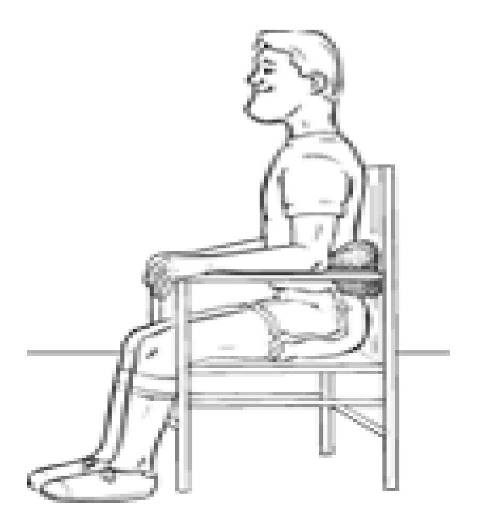

Driving
- Use a back support (lumbar roll) at the curve of your back. Your knees should be at the same level or higher than your hips.
- Move the seat close to the steering wheel to support the curve of your back. The seat should be close enough to allow your knees to bend and your feet to reach the pedals.
Standing
- Stand with your head up, shoulders straight, chest forward, weight balanced evenly on both feet, and your hips tucked in.
- Avoid standing in the same position for a long time.
- If possible, adjust the height of the worktable to a comfortable level.
- When standing, try to elevate one foot by resting it on a stool or box. After several minutes, switch your foot position.
- While working in the kitchen, open the cabinet under the sink and rest one foot on the inside of the cabinet. Change feet every five to 15 minutes.
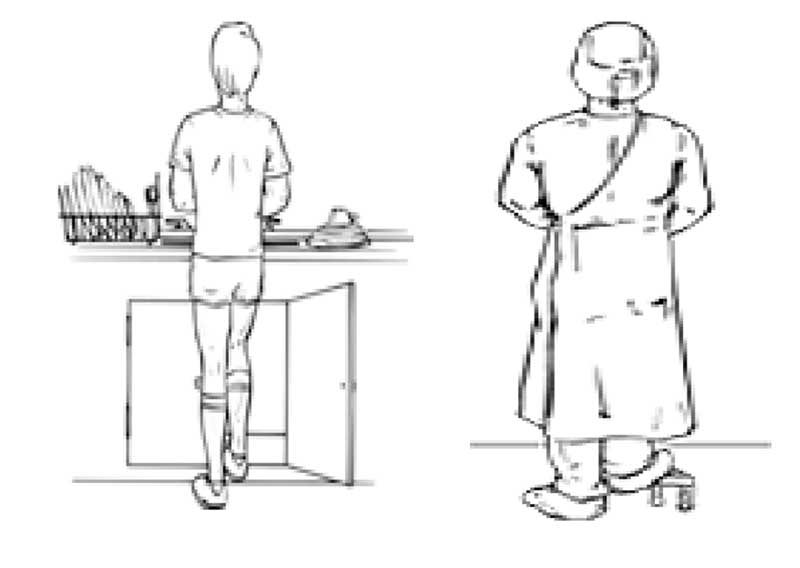
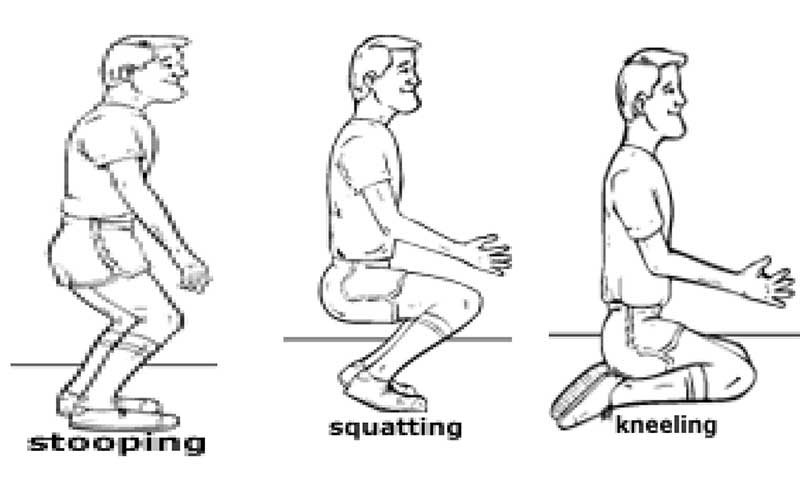
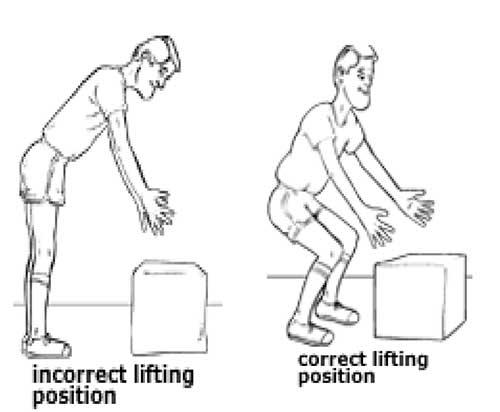
Lifting objects
- Try to avoid lifting objects if possible.
- If you must lift objects, do not try to lift objects that are awkward or are heavier than 30 pounds.
- Before you lift a heavy object, make sure you have firm footing.
- To pick up an object that is lower than the level of your waist, keep your back straight and bend at your knees and hips. Do not bend forward at the waist with your knees straight.
- Stand with a wide stance close to the object you are trying to pick up and keep your feet firmly on the ground. Tighten your stomach muscles and lift the object using your leg muscles.
- Straighten your knees in a steady motion. Don’t jerk the object up to your body.
- Stand completely upright without twisting. Always move your feet forward when lifting an object.
- If you are lifting an object from a table, slide it to the edge to the table so that you can hold it close to your body. Bend your knees so that you are close to the object.
- Use your legs to lift the object and come to a standing position.
- Avoid lifting heavy objects above waist level.
- Hold packages close to your body with your arms bent. Keep your stomach muscles tight. Take small steps and go slowly.
- To lower the object, place your feet as you did to lift, tighten stomach muscles, and bend your hips and knees.
Reaching overhead
•Use a foot stool or chair to bring yourself up to the level of what you are reaching.
•Get your body as close as possible to the object you need.
•Make sure you have a good idea of how heavy the object is you are going to lift.
•Use two hands to lift.
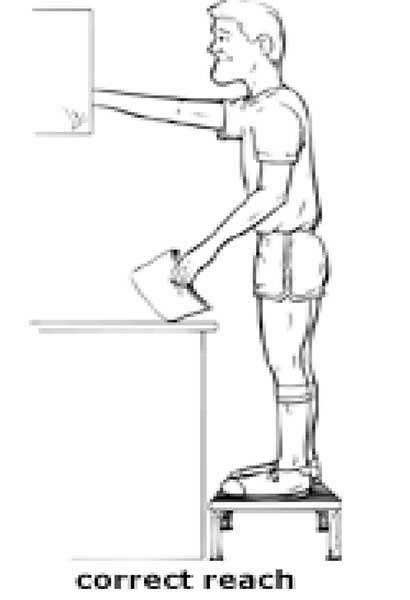
Sleeping and lying down
- Select a firm mattress and box spring set that does not sag. If necessary, place a board under your mattress. You can also place the mattress on the floor temporarily if necessary.
- If you’ve always slept on a soft surface, it might be more painful to change to a hard surface. Try to do what’s most comfortable for you.
- Use a back support (lumbar support) at night to make you more comfortable. A rolled sheet or towel tied around your waist might be helpful.
- Try to sleep in a position that helps you maintain the curve in your back (such as on your back with a lumbar roll or on your side with your knees slightly bent). Do not sleep on your side with your knees drawn up to your chest.
- When standing up from a lying position, turn on your side, draw up both knees, and swing your legs over the side of the bed. Sit up by pushing yourself up with your hands. Avoid bending forward at your waist.
Other helpful tips
- Avoid activities that require bending forward at the waist or stooping.
- When coughing or sneezing, try to stand up and bend slightly backward to increase the curve in your spine.
- Sleep on your side with your knees bent. You can also put a pillow between your knees.
- Try not to sleep on your stomach.
- If you sleep on your back, put pillows under your knees and a small pillow under the small of your back
